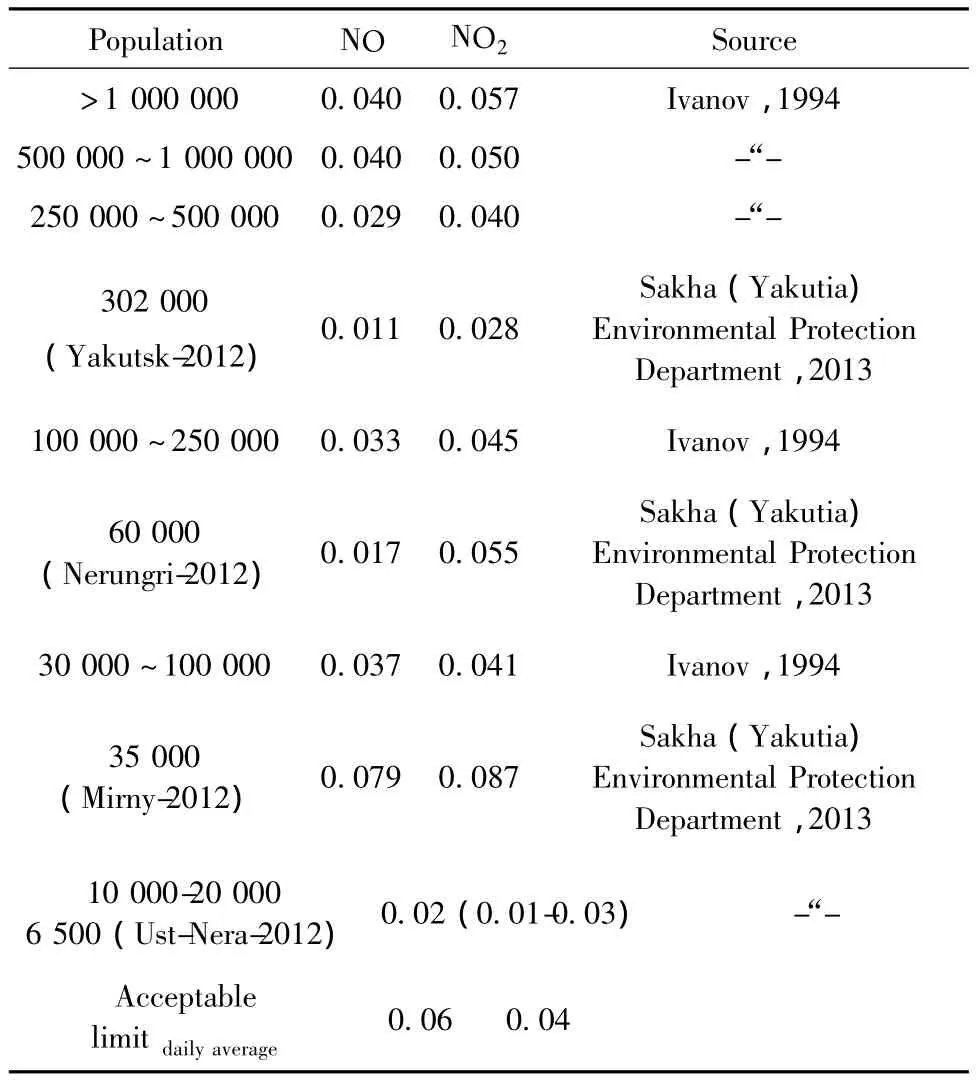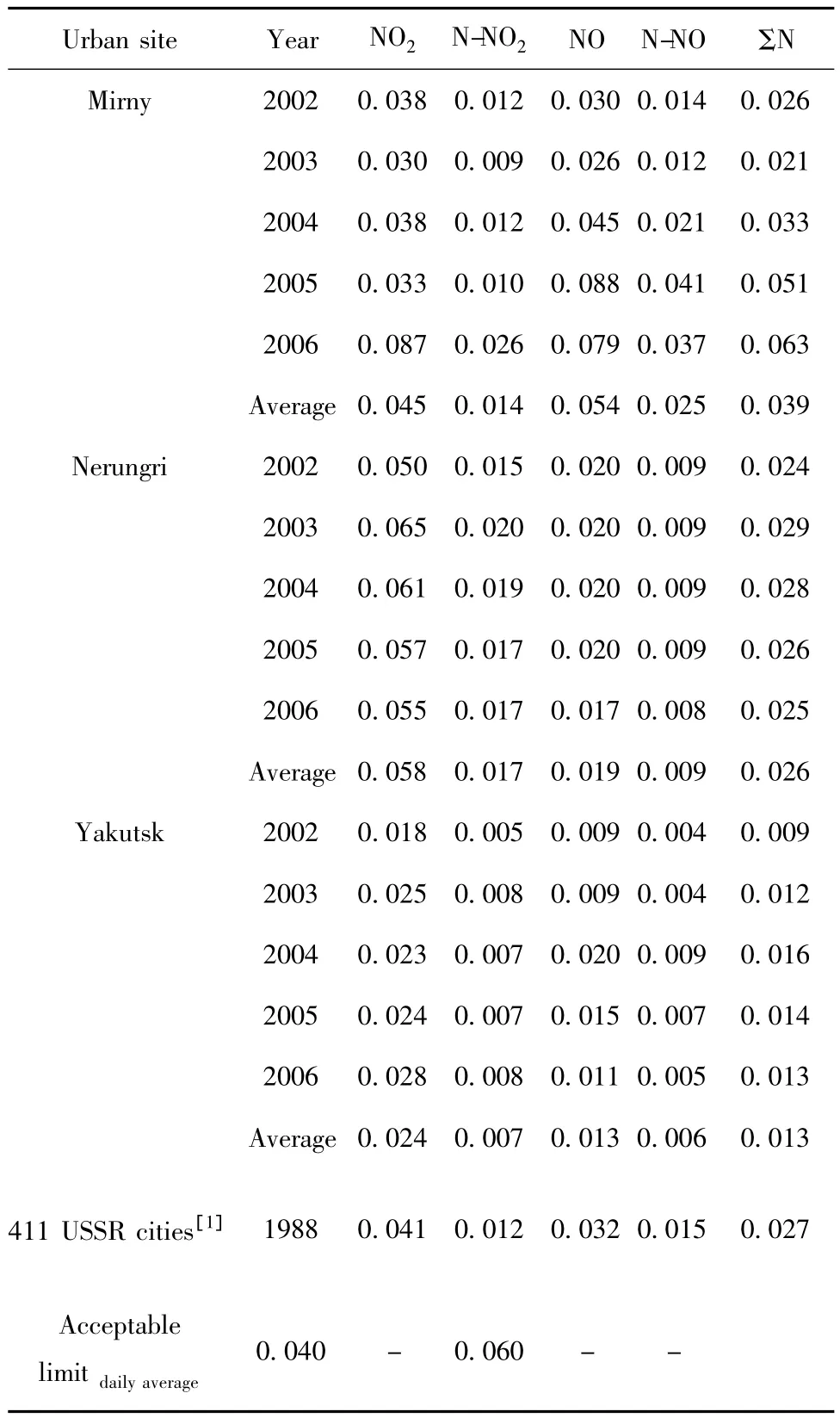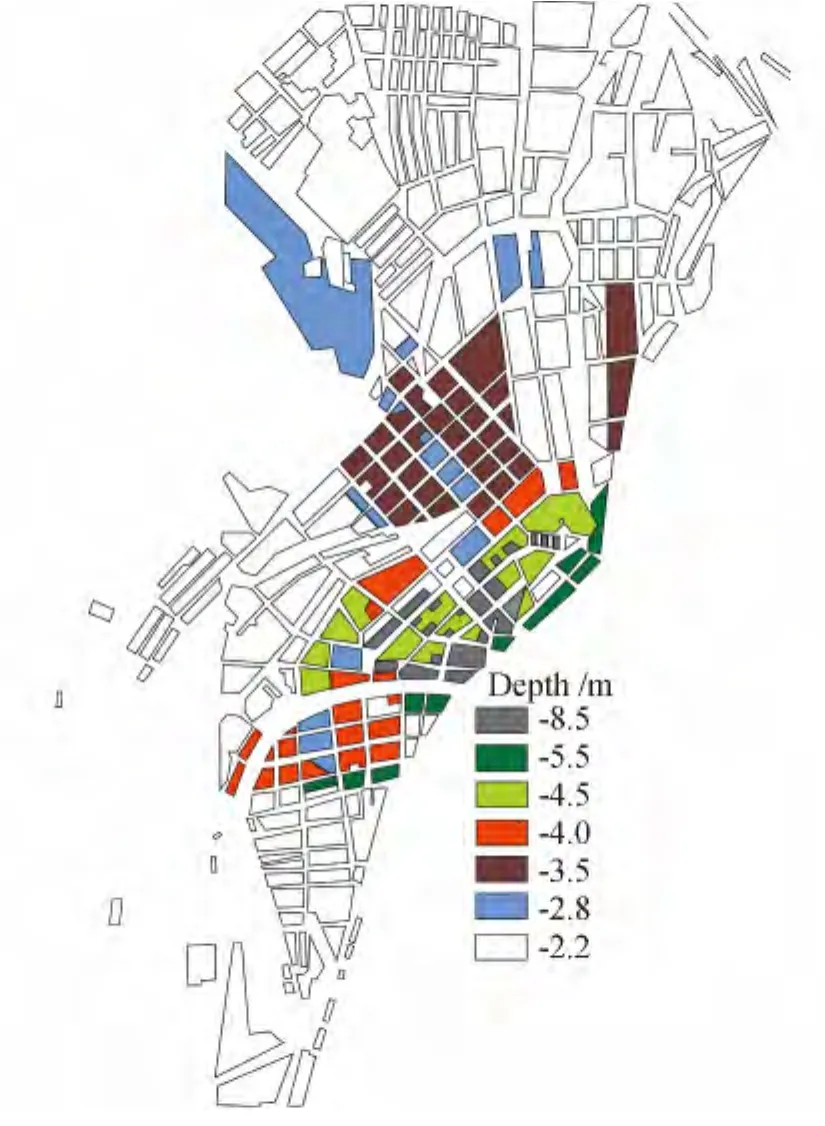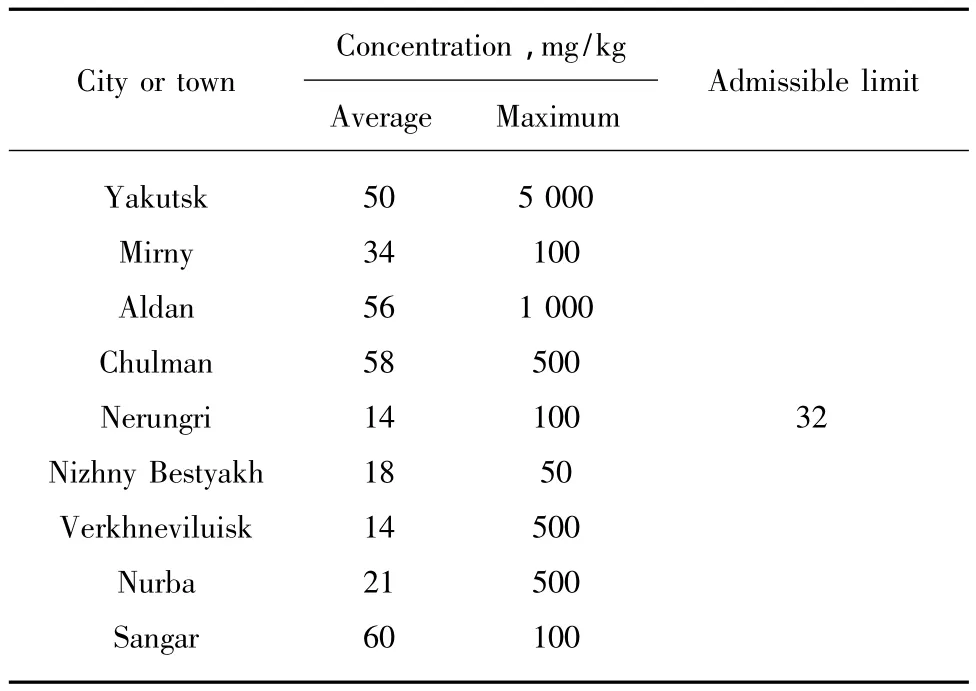Environmental geochemistry of urban areas in Yakutia
2014-07-06VladimirMakarov
Vladimir Makarov
(Melnikov Permafrost Institute SB RAS,Yakutsk 677010,Russia)
0 Introduction
Prevention of environmental pollution is one of the most important global problems today.Urbanization is the most powerful force that profoundly alters the Earth geosphere.During the last 30 years mankind has gained unique experience in investigating the adverse effects of urban environments on human health.
Two fundamental geochemical effects of urbanization are the formation of radically new substances that never existed in nature and the development of new migration pathways.These effects,which are almost totally unexamined in permafrost regions,result in conditions that qualitatively alter the natural geochemical properties of elements.In recent years,the need has grown for detailed study of environmental contamination in northern urbanized areas.
1 Results and Discussion
About 60%~70% of the Yakutia's population live in northern urbanized areas.Most towns in Yakutia had experienced no significant anthropogenic pressure until the mid -20th century.New towns constructed during the last 50 ~ 80 years,like Aldan,Mirny,Neryungri,Udachny,Batagay,Ust-Nera,and Aikhal,mostly have grown up near mining sites and have developed necessary infrastructure(residential,industrial,agricultural and recreational zones).
In contrast to natural contamination sources,the anthropogenic sources are extremely discrete,while environmental media(air and water)are highly dynamic.
Atmospheric concentrations of nitrogen-containing compounds in the urban areas are well known owing to ecological monitoring.Table 1 gives average concentrations of nitrogen oxides(NO and NO2)in the cities of Russia,including Yakutia,with different populations.

Table 1 Average NO and NO2concentrations in the cities of Russia and Yakutia with different populations,mg/m3
Changes in the average annual concentration of nitrogen oxides in the atmosphere of major Yakutian settlements over the period from 2002 to 2006 are shown in Table 2.

Table 2 Average annual atmospheric concentration of nitrogen compounds for Yakutian cities,mg/m3(Sakha(Yakutia)Environmental Protection Department,2013)
High levels of pollution are observed in Mirny and Neryungri where concentrations of nitrogen dioxide exceed the daily average limit set by the national air quality standards.In Neryungri the nitrogen dioxide concentrations have been relatively constant,while in Mirny it has nearly doubled between 2002 and 2006.
The use of a wide array of chemical elements by most industries and the large variety of activities in industrial zones produce multi-elemental geochemical fields.Geochemistry of anthropogenic contaminants is site-specific and often variable in time.The urban areas in Yakutia,for example,are characterized by the typomorphic geochemical complexes:Yakutsk(Hg,Zn,Pb,Sn,La,Cr,Y,Ag,P,Mo,Ge,B,Mn,Cu,Ni),Aldan(Ni,Pb,Be,Cr,Ag,Zr,Sr,Hg,Cu,Au,As,Co,Tl,Y,Se,Nb,Zn,Mn),Neryungri(Mn,Zn,Pb,Co,Li,Y),and Mirny(As,Sc,Ag,Hg,Pb,Y,W,Ti,Mn,Co,Ni,Sn,Cu,Zn,Li,B).The increasing environmental burden caused by the growth in urban population and long-term buildup of contamination results in high salinity of the urban soils and changes their acidity-alkalinity and redox potential.This in turn complicates the subsurface conditions at construction sites.In Yakutsk,for example,the depth of saline soils is,on average,8.5 m in the older parts of the city,while in the areas of new development it is 2.2 m(Fig.1).

Fig.1 Depth distribution of saline soils in the city of Yakutsk
Another example is the relationship between the nitrogen compound concentration,redox potential and salinity of soils and the population size observed in some urban areas of Yakutia(Table 3).

Table 3 Average concentration of nitrogen compounds in urban soils of Yakutia
Anomalous contamination levels with the highest potential for adverse environmental impact are observed at thermo-hydrogeochemical barriers where cryopegs,special type of groundwater,are formed.Cryopegs penetrated by drill holes have a shape of elongated lenses 0.1 to 0.2 m in thickness and up to 100 m in extent.
Yakutsk(borehole 354,depth 5.5 m)

In Yakutsk,total dissolved solids contents in cryopegs are locally as high as 50~100 g/L.The freezing point of soils containing such highly saline water is depressed to -3 to -5℃.The passive construction method which involves maintaining the foundation in a frozen state is not applicable to these soils.
Degradation of the groundwater quality in the urban areas is mainly caused by elevated concentrations of magnesium and sodium chlorides,nitrogen compounds and some toxic elements,such as manganese,strontium and chromium.
The high population density,heavy traffic,high resource consumption and large waste volumes cause serious environmental problems in the urban areas.Not only transport and industrial facilities,but the urban areas themselves can be a significant source of soil contamination(Table 4).

Table 4 Lead in urban soils of Yakutia
One significant source of environmental contamination is municipal waste.In Yakutsk,for example,waste fires at the Vilyuisk sanitary landfill emit very high concentrations of nitrogen and sulphur compounds,chlorides,carbonates,Mg,Mn,V,Pb,Sn,Cd,Zn,Cu,Cr,Mo,Hg,Fe,and Al.Anomalous zones may persist for decades or centuries even after source removal.For example,soils near an abandoned waste disposal site at Yakutsk(Viluisky Lane)remain contaminated with heavy metals 50 years after its closure.
2 Conclusions
Environmental geochemistry studies indicate that despite the relatively small scale and low concentration of industry,many urban areas of Yakutia are characterized by high levels of environmental loading.This is due to unfavourable climatic and engineering-geological conditions,as well as in many cases to mistakes made in the development and maintenance of infrastructure.Anthropogenic geochemical anomalies are present in all components of the natural environment,including air,snow,soil,water,and vegetation.Another feature of the Yakutian cities and towns is the high rate of downward migration,leading to deep contamination of the active layer,increased salinity of the permafrost,and its transition from a perennially frozen to plastic frozen or thawed condition.
One of the most acute problems in environmental geochemistry research is integral evaluation of the state of urban ecosystems.Our studies have shown that for objective assessment,synthesis of the set of geochemical ecological indicators is necessary which would consider the type and degree of contamination in all components of the natural environment(atmospheric air,snow,soil,vegetation,and water)and the public health effects of anthropogenic pollution.However,today most ecological studies are limited to one or in rare cases to two environmental media,primarily because of financial constraints.
Many theoretical and practical problems of ecology of northern cities have not been fully elaborated as yet.Thus far,the veil of uncertainty has been lifted for only few of the interrelated issues of medicine and geochemistry,while for many other research problems there is a long way to go.
[1]Ivanov V V.Main ρ-elements.Environmental Geochemistry of Elements,Six-volume Reference Book[M].Moscow:Nedra,1994(2):303.
[2]Makarov V N.Geochemical Monitoring of Precipitation in Central Yakutia[M].Yakutsk:Melnikov Permafrost Institute Press,2007:88-92.
[3]Sakha(Yakutia)Environmental Protection Department[M].Report on the State and Protection of Environment in the Republic of Sakha(Yakutia)in 2012.Yakutsk:Dany-Almas,2013,262-265.
杂志排行
黑龙江大学工程学报的其它文章
- Industrial and residential construction on hydraulic fill in permafrost regions:problems and prospects
- A permafrost factor in the development of deformations on the Amur Highway
- The forecast of a temperature regime of soils containing the pile foundation of a pithead on diamond-mining mines of cryolithic zone
- Temperature study of railway embankments on ice-rich permafrost in Yakutia
- Overview of research methods of frozen soil hydrology in Heilongjiang Province
- The problem of project statement of construction principles of buildings and facilities in permafrost
